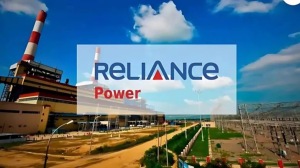By Narendran Thillaisthanam
Automation and AI are emerging as the cornerstones of transformative progress in the ever-evolving IT sector. These technologies are dramatically reshaping industries by augmenting human capabilities, optimizing operations, and catalyzing innovation, bringing in unprecedented change.
Today, automation leads the charge in the IT sector by streamlining workflows, optimizing processes, and enhancing efficiency. Routine tasks that once consumed human resources and efforts are now seamlessly executed by AI-powered systems. These developments and shifts in approach liberate human ingenuity, enabling the workforce to dedicate time and efforts to complex problem-solving and strategic innovation. Across functions ranging from code deployment to network management, automation ensures precision and speed, augmenting the overall productivity of the IT sector with humans working alongside technologies, making the best out of their respective advantages.
AI’s significance cannot be understated. It is revolutionizing data analysis, cybersecurity, and customer experiences. Machine learning algorithms decode vast troves of information, extracting insights that were once incomprehensible. This predictive prowess enables agile decision-making and fuels proactive problem-solving.
Cross-industry impact led by the revolution in the IT sector:
The transformative power vested by automation and AI technologies in the IT sector has an outward ripple effect that resonates across multiple industries. For instance, technologies such as Generative AI can be leveraged effectively in FinTech involving tedious, manual, language-centric operations such as journal entries that can involve hundreds or thousands of transactions that need to be recorded in a structured format. In cybersecurity, these technologies can help in fortifying defenses against ever-evolving threats detecting fraud, and maintaining compliance, especially in the banking, financial services, and insurance (BFSI) sector.
Another great example is its application in reading and understanding 10-K documents that run into several hundred pages. Where analysts spend hours sifting through these pages to understand a business’s performance and future outlook, Gen AI can read, understand, and ask the relevant questions in a fraction of the time and make the process a lot less cumbersome.
The above idea can be extended to other domains as well easily. In the field of medicine, extraction knowledge from clinical notes, prescriptions, etc. has long been an aspirational problem that is coming to fruition now. Similarly, every company has a treasure trove of documents – policies, SOPs, FAQs, KRAs, etc. which can now be queried in natural language. And, we are only touching on the topic of this AI iceberg..!
The future of work:
As the scope of AI and automation expands, the job roles will evolve, requiring the workforce to acquire or learn hybrid skills that blend technical expertise with creative problem-solving. Companies will experience accelerated innovation cycles, as the human workforce is liberated from mundane or repetitive tasks to dedicate time to focus on using cognitive skills and creativity to tackle specific business challenges.
What’s next for the IT sector?
Potential trends include AI-driven predictive maintenance in hardware management, augmented reality-enhanced troubleshooting, and the rise of AI-augmented development tools that expedite coding processes. Cloud infrastructure, poised to become more intelligent and adaptable, will provide the backbone for these innovations. The growing prominence of low-code/no-code has enabled businesses to bypass the time-staking coding process to develop ready-to-market solutions at a pace unimaginable before.
In the IT sector’s future, the harmonious partnership between human ingenuity and automated precision will be pivotal. Those who navigate this synergy adeptly will lead the charge, accelerating innovation and propelling the industry toward an era of unprecedented technological prowess.
The author is chief technology officer, WNS-Vuram









